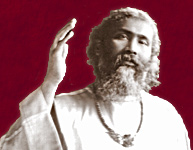Biography, Autobiography, Journal and AnecdotesPart I - BiographyIndia in 1882Towards the middle of the latter half of the 19th century, a desire for religious and social reform was awakening in India among Hindus and Muslims alike. Centuries earlier, Shankaracharya had turned the tide of religious feeling towards a greater spirituality. Both Nanak, the great Guru of the Sikhs, and Kabir, the poet, had created and left in the land a living spirit of tolerance in religion and of spiritual purity. A fresh fire was given to religious life by the great sages Dadu and Sundar. More recently the religious association Arya Samaj had been founded by Dayananda Saraswati, the religious reform of Swami Narayan had been made, Devendranath Tagore had lighted a new flame of religion in Brahmo Samj. Then Mirza Ghulam Ahmad Qadiani had set on foot the Ahmadia Movement, the Christian missionaries were endeavoring to propagate Christianity and the Theosophical Society had established itself as The Hindu College at Benares. The dark clouds that had hung over the land in the years following the Mutiny, were breaking. On the one hand Sir Sayyed Ahmad was working to induce the Muslims to make the best of existing conditions, in particular by the foundation of Aligarh College and to arouse in the Muslim youth a spirit of enterprise, energy and self-dependence and on the other hand the British Government was setting to work at reform in law, education and administration. Such was the condition of India in 1882. |

